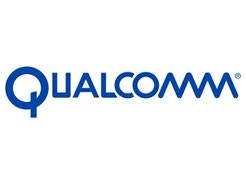It ain’t easy being king. Mobile chip giant QUALCOMM, Inc. (NASDAQ:QCOM) has had a lock on mobile applications processors and baseband modems for quite a while, despite assaults from smaller rivals looking to cut in.
One of the key aspects of its ability to differentiate is that the company licenses architecture instruction sets from ARM Holdings plc (ADR) (NASDAQ:ARMH) instead of just standard core designs. This allows Qualcomm’s processors to be more sophisticated. Years ago, the company was the first to introduce asynchronous multicore processors, allowing separate cores to be independently clocked with different voltages. Translation: Qualcomm Snapdragon processors are extremely power efficient.

One of Qualcomm’s most lucrative spots in recent times has been Samsung, as the South Korean conglomerate has done wonders for itself by copying Apple Inc. (NASDAQ:AAPL)‘s playbook. Samsung is now the world’s top smartphone vendor by a healthy margin, shipping 213 million units in 2012. Many of those devices carry Snapdragons inside, while some sport NVIDIA Corporation (NASDAQ:NVDA) Tegra processors or Samsung’s own Exynos chips.
In order to further emulate Apple strategically, Samsung has made a big push recently toward even further vertical integration, even as the conglomerate is already one of the most vertically integrated companies known to man. Thus far, most of Samsung’s integration has been in commoditized components, whereas it can differentiate itself more from other hardware OEMs by upping its game in processor design, and eventually may try to seize control of its operating system destiny.
The upcoming Galaxy S IV is reportedly launching March 14, which is just weeks away. A refreshed flagship is a necessary response for Samsung, since its Galaxy S III is seeing sales wane in the face of the iPhone 5. In fact, even the older-generation iPhone 4S outsold the Galaxy S III in the fourth quarter.
One of the key features in the Galaxy S IV was to be Samsung’s Exynos 5 Octa processor. The chip has 8 cores and is based on ARM’s big.LITTLE technology where four low-power cores (Cortex-A7) supplement four high-power cores (Cortex-A15). It turns out this may be easier said than done.
When in doubt, call Qualcomm
Piper Jaffray analyst Gus Richard recently put out a research note that Samsung may be having problems with its Exynos 5 Octa chip. The company seems to be facing power issues as it heads up to its slated launch date. Because of these challenges, the Galaxy S IV may be delayed and Richard believes that the Galaxy S III has remained in production longer than expected to accommodate for possible delays with the new model.
As a result, the analyst thinks that it is increasingly likely that Samsung will turn to “external sources” to procure the ingredients that it needs, with Qualcomm stepping up to pick up some slack. That would be an easy fallback while Samsung continues to work out the kinks with the Exynos 5 Octa. Qualcomm has launched its next generation of Snapdragon 600 and 800 processors with hefty performance gains.
HTC’s new flagship One smartphone that was just unveiled carries a Snapdragon 600, and the Taiwanese OEM is hoping that the device will eat into Samsung’s sales. Putting a Snapdragon 600 or 800 in the Galaxy S IV would ensure that Samsung’s new flagship is competitive. It’s either that or risk shipping a device with terrible battery life or delaying launch by a couple months, possibly putting it directly up against an iPhone launch this summer.
The analyst is reiterating his rating on Qualcomm at “overweight” along with a hefty $83 price target, in part due to his believe that Qualcomm will earn more of the Galaxy S IV business.
The article It Ain’t Easy Doing What Qualcomm Does originally appeared on Fool.com and is written by Evan Niu, CFA.
Fool contributor Evan Niu, CFA, owns shares of Apple and Qualcomm. The Motley Fool recommends Apple and NVIDIA. The Motley Fool owns shares of Apple and Qualcomm.
Copyright © 1995 – 2013 The Motley Fool, LLC. All rights reserved. The Motley Fool has a disclosure policy.





